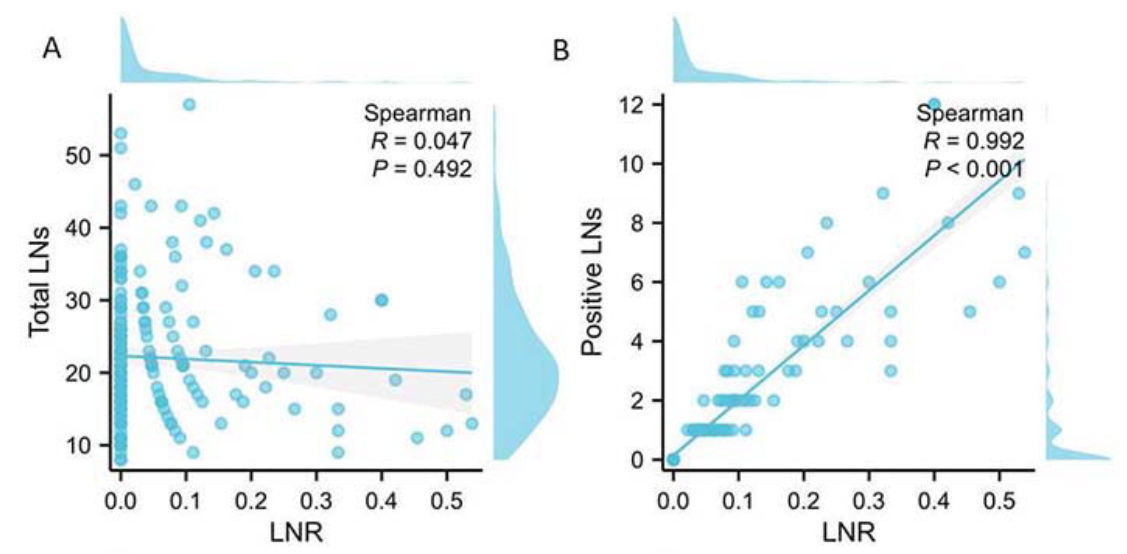Lymph node ratio is a prognostic indicator for locally advanced esophageal squamous cell carcinoma after neoadjuvant immunochemotherapy
DOI:
https://doi.org/10.17305/bb.2023.9435Keywords:
Neoadjuvant immunochemotherapy, esophageal squamous cell carcinoma, pathologic complete response, overall survival, disease-free survival, lymph node ratioAbstract
The lymph node ratio (LNR) is regarded as a prognostic indicator in esophageal cancer (EC), but its applicability to neoadjuvant immunochemotherapy (NICT) in esophageal squamous cell carcinoma (ESCC) remains unexplored. This retrospective study, conducted between 2019 and 2021, analyzed ESCC patients who underwent radical esophagectomy following NICT. Patients were divided into two groups based on their LNR values according to the X-tile software: Low-LNR group (LNR 0-10%) and High-LNR group (LNR 10-100%). The association between LNR and clinical outcomes in ESCC after NICT were analyzed. A total of 212 ESCC patients who underwent surgery after NICT were included in this study, among which, 169 (79.7%) and 43 (20.3%) cases were allocated to the Low- and High-LNR groups, respectively. Pathologic complete response (PCR) was observed in 28.3% (60/212) of the overall cohort. Patients in the Low-LNR group demonstrated a significantly improved 3-year overall survival (OS) (81.7% vs 55.3%; P < 0.001) and disease-free survival (DFS) (79.9% vs 37.4%; P < 0.001). These findings were consistent among those with non-PCR (3-year DFS was 73.7% vs 37.4%; P < 0.001, and the 3-year OS was 78.9% vs 55.3%; P < 0.001, respectively). High LNR was associated with a 4.013-fold increased risk of relapse and a 7.026-fold elevated risk of death. Compared to the post-neoadjuvant therapy pathologic lymph nodes staging (ypN), LNR exhibited similar prognostic capabilities for DFS and OS. To the best of our knowledge, this study is the first to investigate the prognostic value of LNR in ESCC after NICT, suggesting that LNR may serve as a viable alternative to the ypN stage for prognostication in ESCC patients treated with NICT.
Citations
Downloads

Downloads
Additional Files
Published
Issue
Section
Categories
License
Copyright (c) 2023 Pengcheng Chen, Liang Wang, Xun Yang, Jifeng Feng

This work is licensed under a Creative Commons Attribution 4.0 International License.
How to Cite
Accepted 2023-07-29
Published 2024-01-03









